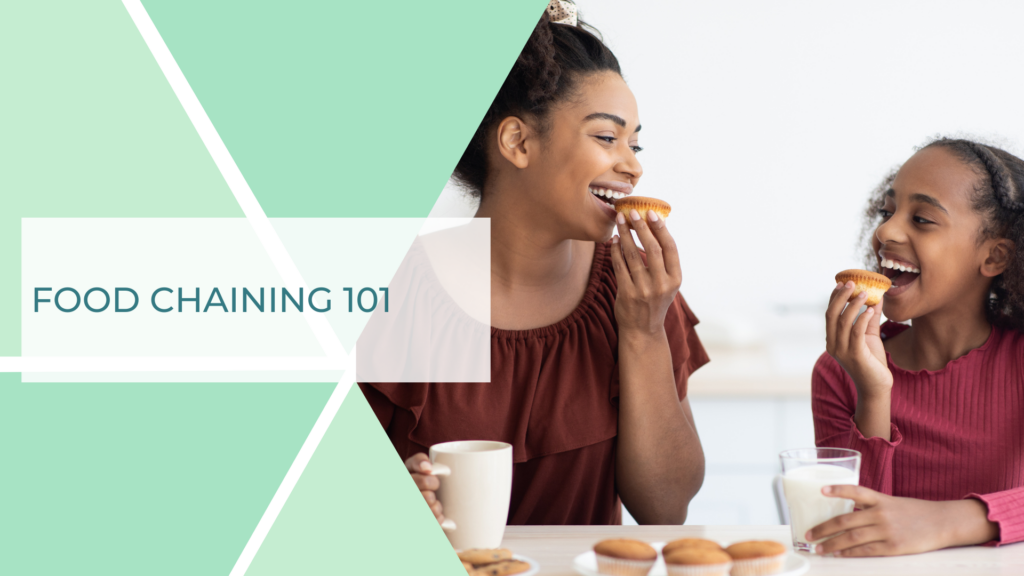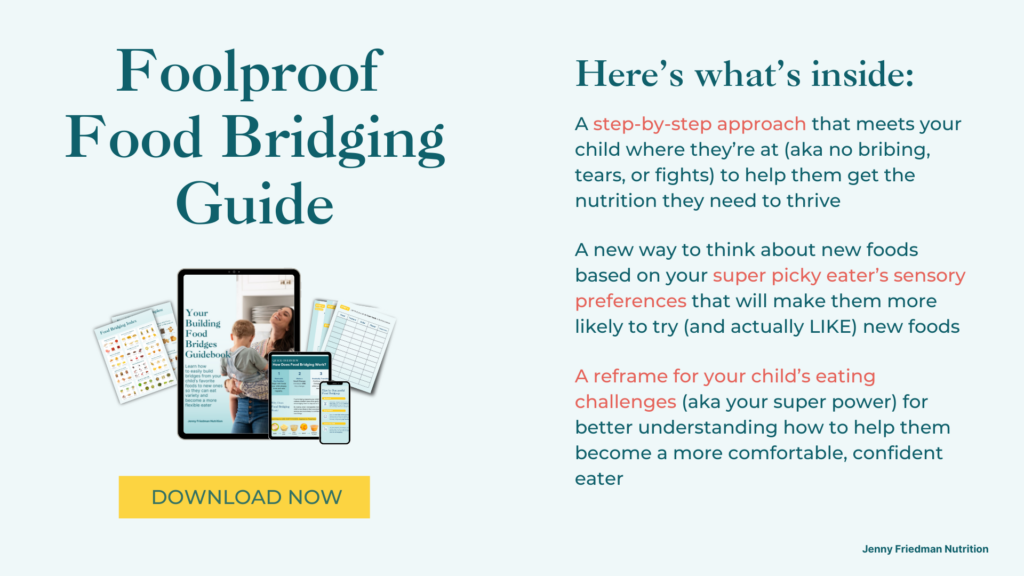
How often have you looked at the limited number of foods your child eats and seen an opportunity?
Never, right?
I know. It’s hard to see the glass half full when your child eats only one specific shape of macaroni and cheese from one specific brand. But after helping so many very picky eaters expand their diets to include more foods, I now see potential when parents share their child’s limited food list.
A Proven Strategy to Get Your Picky Kid to Eat More Foods
Would you believe me if I told you there is an effective way (well, several, actually) to get your picky eater to try new foods? And that this way is rooted specifically in your child’s unique food preferences.
This one effective technique is called food chaining or food bridging.
This article will answer the following questions about food chaining:
- What is food bridging?
- How does food bridging work?
- Will food chaining work for my picky eater?
- How can I start creating customized food chains for my child?
What Is Food Bridging?
Food chaining is a step-by-step journey to expand your child’s diet and increase their food flexibility.
Food chaining works by using small steps and intentional changes to preferred foods that, over time, create a bridge leading to a completely novel food.
How Does Food Bridging Work?
A food bridge originates with an accepted food, one that your child eats willingly and reliably. A bridge is created by making gradual changes to the accepted food over time. You can end with goal food or just see where the bridge takes you.

For example, a food bridge may start with a child’s favorite brand of chicken nuggets and end with baked fish.
The early stages of this bridge could also include new brands and shapes of chicken nuggets. Gradually, as a child comes to routinely accept the new food in each baby step, the offerings evolve to something similar yet completely new like breaded fish nuggets or and eventually baked fish.

See another example of a food chain below. This food bridge starts with an accepted food of Goldfish crackers”and works its way through a number of small gradual changes to eventually end at the goal food of grilled cheese.

You get it, but one more example just for fun (and for all the Oreo lovers out there!)

Now that you see how food chaining works, you’re probably wondering….
Could Food Chaining Help Your Picky Eater?
Yes! Food chaining is beneficial for any selective eater and is especially beneficial for kids with sensory sensitivities.
Food chaining isn’t your typical “try this new food” approach. Instead of offering your child any random food you want them to eat, hoping that maybe, just maybe this time they will eat it, you are strategically and intentionally introducing foods they are likely to eat based on their unique preferences.
You use these preferences to your advantage and make small changes while waiting to advance until the new foods become accepted foods.
Part of why food chaining works so well for extreme picky eaters (including kids with sensory food aversions) is because it takes into account the sensory experience of eating. The approach minimizes the anxiety that many picky eaters experience when asked to eat a new food.
Keep in Mind
Food chaining works:
Every child I’ve used food chaining with has benefited and in a clinical study, after three months of food chaining feeding therapy, ten selective eaters increased their number of accepted foods from 5 to 20.5.
Note that that level of success with food chaining took time.
It can help to remember that every step of a food chain is progress.
How to Get Started
If you’re ready to start building your own food bridges or want to learn more about this effective strategy, download the FREE Foolproof Food Bridging Guide.
Recap
Food chaining is a tool that helps you identify foods that your child is most likely to eat. Food chaining gives you a framework for introducing new foods in a way that your child is most likely to accept. Essentially it’s an individualized and systematic approach to help your picky eater try new foods. It is based on your child’s food preferences and the sensory profile of those foods. Food chaining starts with an assessment of the flavor, texture and visual properties of your child’s favorite foods and ends with a selected goal food.




0 Comments